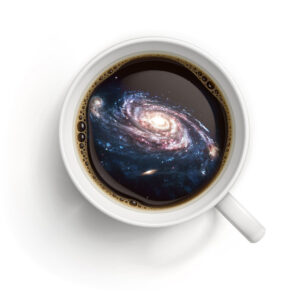

- This event has passed.
Cafe Club
23 November 2022 à 11h00 - 12h00

Louis QUILLEY (Institut d’Astrophysique de Paris): “Aging of galaxies along the Hubble sequence”.
The cafe-club will take place at 11:00 am in the Library at LAM and on usual AMU virtual room
(Meeting ID : 968 7683 2544 — Passcode : 173347)
You can find the schedule of upcoming café-clubs and the video of old ones here
Take care,
Carlo, Mathilde, Meriam
—————-
ABSTRACT
We revisit the bimodality of galaxy populations seen in color-magnitude diagrams using the nearby EFIGI catalog and its morphological classification. We perform bulge+disk luminosity profile-fitting with the Euclid SourceXtractor++ software and spectral energy distributions fitting with the ZPEG software in order to obtain the absolute colors, surface brightness and scale-lengths of whole galaxies as well as of their bulge and disk components, and derive their stellar masses and specific star formation rate (sSFR). The absolute NUV − r color versus stellar mass diagram shows a S-shape pattern corresponding to a continuous relationship between the present sSFR of galaxies and their stellar mass, that spans consecutively all morphological types of the Hubble sequence, which are for the first time located on the diagram. Galaxies across the Green Valley undergo a systematic disk reddening and a marked bulge growth of a factor 2 to 3 in fractional mass of galaxies, the latter indicating that this cannot be a quick transition region in which galaxies are suddenly quenched from star-forming to quiescence. By examining bulges, disks, bars and spirals arms, we paint a picture of galaxy evolution suggesting that internal dynamics, likely triggered by mergers or flybys, may be the key to the bulge growth and aging of galaxy disks from the Blue Cloud to the Red Sequence. The Hubble sequence can then be considered as an inverse sequence of galaxy physical evolution. We also remeasure the scaling relations of Kormendy (1977) and Binggeli (1984) between mean effective surface brigthness, effective radius and absolute magnitude for E galaxies and bulges of all lenticular and spiral types, and bring to light similar relations for their disk components. We detect continuous shifts in the scaling relations and changes in the effective radii of the disks and bulges as well as their ratios across the Hubble sequence, that may be related to galaxy evolution along the sequence.



